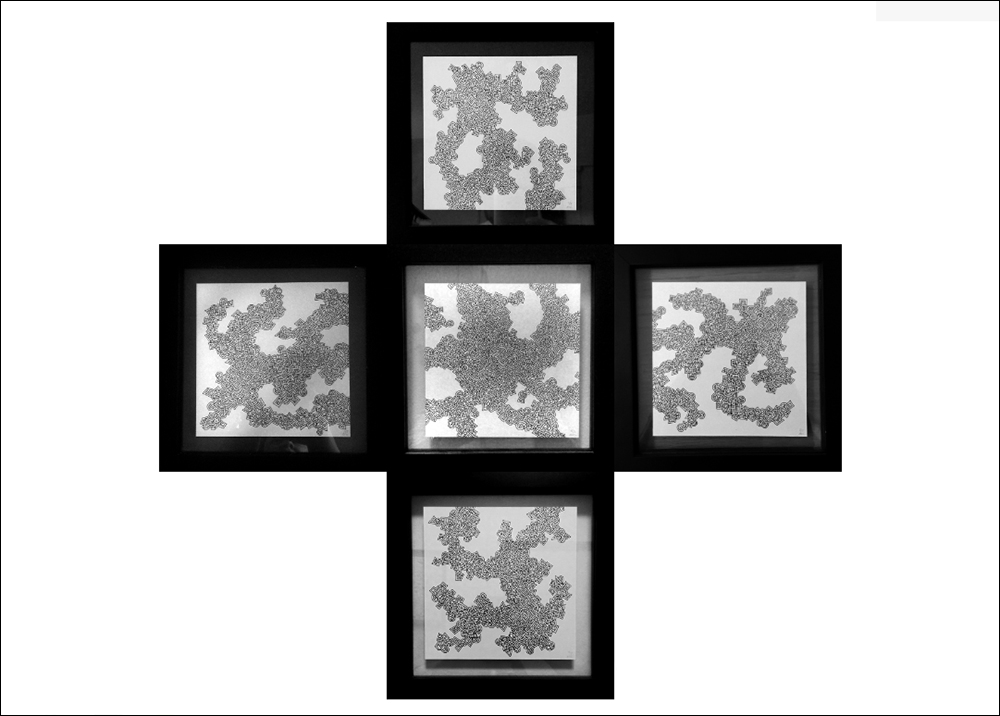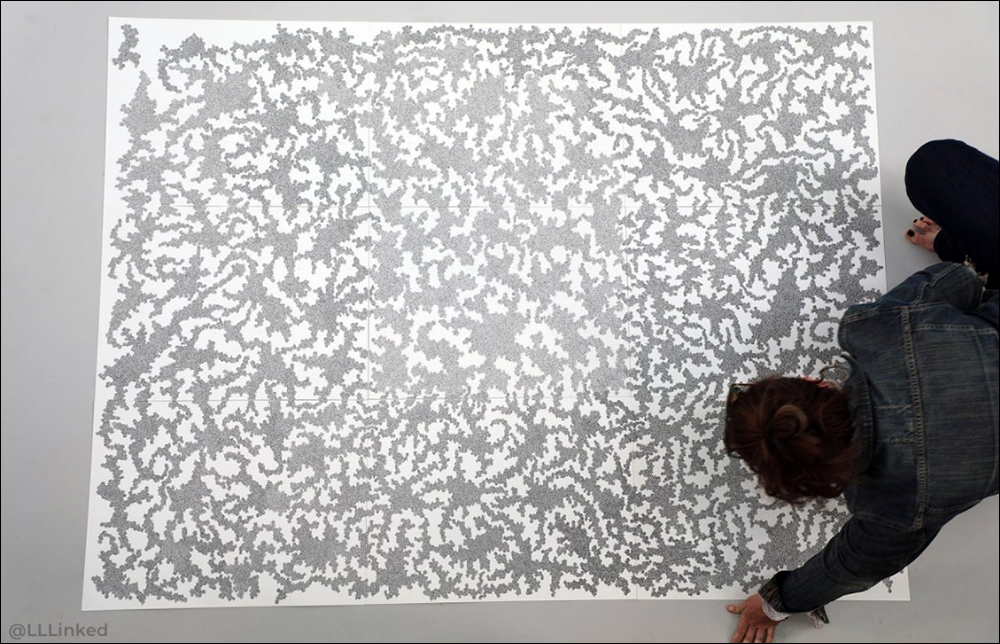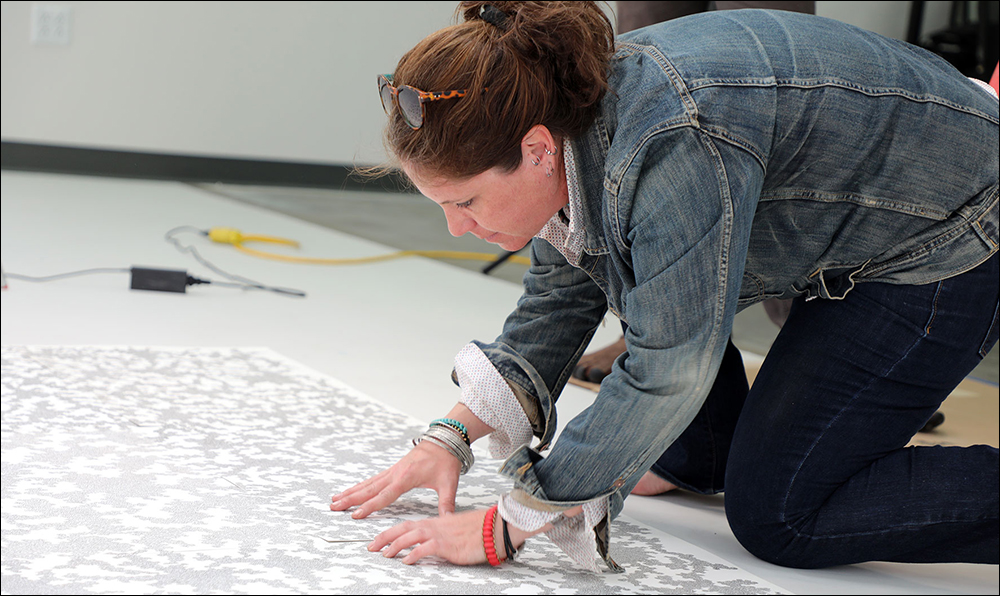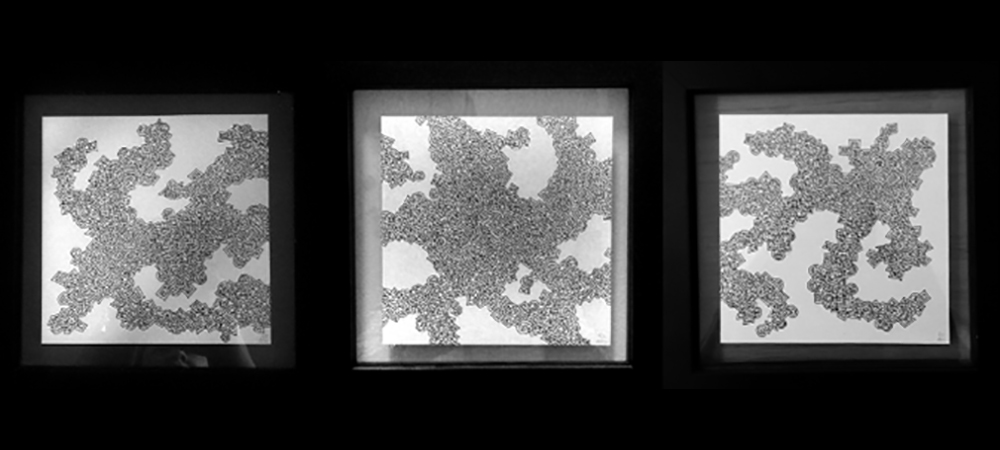- Creating a Jigsaw Puzzle to Draw People Together
- Selecting a Timeless RFID Tag
- Adding RFID and App-Based Connections
Technology is helping to authenticate art in a global project by artist Anna Clark, which links the disassembled pieces of a growing artwork, along with those who own the pieces. The project combines art with social wellbeing and community, and it leverages HF RFID and QR-coded tags from Metalcraft to uniquely identify each piece. Years in the making, the LLLinked art project is about creating connections and reducing the isolation being driven by social media. At the center of this project, Clark’s work consists of a single, continuous ink drawing, divided into gridded pieces.
Social media has helped to shape how people interact, Clark explains, yet it has not all been good. “I don’t think it’s making us more social,” she says. It’s making us antisocial.” More time interacting digitally, Clark maintains, is taking place as many spend less time in physical human interactions. She has considered the ways in which art could reverse that process and bring people together across geographies, as well as time. She hopes those who have pieces of her art will form new connections, not only now but also far into the future.
Clark has set an event date for her hundredth birthday, which will be decades from now, on May 18, 2077. She hopes owners of her artwork will attend the event to celebrate their connections and create friendships that will continue into future generations. RFID’s role in this project is authentication. Each of Clark’s printed pieces of work comes with a Metalcraft Near Field Communication (NFC) tag that transmits data via 13.56 MHz (compliant with the ISO 15693 standard) to NFC-enabled smartphones. In the future, she expects the HF RFID tags to register each ink drawing and create an ownership profile.

Each sheet is numbered and connected to additional sheets that carry the drawing as it moves in a clockwise pattern around the first sheet.
Creating a Jigsaw Puzzle to Draw People Together
Art is in Clark’s DNA, she says. She began doodling and sketching during her childhood and found that one piece of paper was not enough to contain her creativity. While pursuing a graduate program at the University of Iowa, she found herself frustrated by the break caused by the edge of the paper. That led her to the idea of adding pieces of paper, cutting her ever-expanding drawing into squares and creating an artwork jigsaw puzzle, of sorts, that could be fitted together after it was separated.
Initially, Clark draws her work on 24- by 18-inch sheets of paper, each of which is then cut into a grid of a dozen 6- by 6-inch squares. Each sheet is numbered and connected to additional sheets that carry the drawing as it moves in a clockwise pattern around the first sheet. Each square is also uniquely labeled. She then prints a limited number of the pieces. Clark, who conducts the project only during the free time she has available from her graphic design work, has drawn 25 sheets so far. The artist has created prints of sheet number one, and those personally signed and uniquely labeled prints are for sale.
Buyers can purchase the art prints directly from the LLLinked website for $100 each. Once they receive their print, they have a choice: simply enjoying the art for its own sake and displaying it on a wall, or visiting the website to create an owner profile. Those who opt for the latter can provide as much information as they feel comfortable with, then connect with other art owners also participating in the project.
To use the RFID tag, buyers would turn on their phone’s NFC functionality and tap it near the label on the back, enabling them to view the identification number confirming that the piece of art they have purchased is authentic. The same process could be accomplished with the QR code.

Clark, who conducts the project only during the free time she has available from her graphic design work, has drawn 25 sheets so far.
Selecting a Timeless RFID Tag
Metalcraft worked with Clark to identify a tag that could be attached to the specialized archival paper on which she prints her work, which would resist yellowing or aging so that the art could be expected to last for decades or even centuries. Metalcraft provided the artist with an Avery Dennison Smartrac Circus SLiX2 HF inlay printed with a corresponding QR code and the LLLinked logo. The tag is attached to the back of the artwork using an acid-free archival adhesive, according to Colynn Black, Metalcraft’s RFID business-development director. The unique ID number encoded on that tag would be linked to the print’s serial number.
Metalcraft customized a tag that would suit the artwork’s aesthetic and not exceed a size of 2 inches square. The company customized the adhesive so that it could resist the aging process while not being abrasive to the artwork. Regarding the longevity of RFID as a technology, Black speculates that RFID has many decades of active use ahead. “The unique thing about RFID is that it’s been around for years,” he states, despite the public perception that it is a new technology, as it dates back to the World War II era, when it was used to identify airplanes.

This puzzle-like work is what Clark calls handmade social media.
Adding RFID and App-Based Connections
While authentication is the first use case, the RFID tags could be used in the future to directly connect users with the registration site at which they can enter their profile information, which would then be linked to their piece of art. In addition, it could provide users with visual content. “One thing I thought of when we were doing this project,” Black recalls, “was that it could technically link to a private page that a user could view to see a picture of that particular piece of artwork.”
So far, most buyers are people Clark knows personally. “What’s interesting,” she says, “is that a lot of the people who own these squares don’t know one another, so it’s up to them if they want to send an e-mail and be like ‘Hey, what’s up?'” The system could do more to help guide social interactions in person, she adds, using smartphones as a tool. For instance, those who have opted into a system on a dedicated app could be detected automatically via Bluetooth or geolocation if they came within the vicinity of another participating art owner. “Those are thoughts that are still way out in the future, that may or may not be done.”
Clark is patenting the project’s process for creating and disassembling an ongoing work of art, then uniquely identifying the resultant pieces. This puzzle-like work is “handmade social media,” she explains. “The goal is not to see the full work of art put together—[it] is to simply be a catalyst for social interaction and to see what is created when people come together.” A printed message on the back of every square invites the owner to visit Iowa City on the 2077 event date, then again every decade thereafter. For those who would like to start meeting new people now, she plans to create some events that may take place earlier.
For Metalcraft, the project and customization it requires provide an opportunity for innovation that the company values, whether involving several hundred or millions of tags. “We’ve prided ourselves on being a technology innovator and helping solve problems,” Black says, “and it’s not always dependent upon the volume or the dollar amount behind it. It’s projects like that [which] allow for technologies to advance. We really enjoyed making the complex simple.”
If the project attracts attention, Clark says, more members would join the art-owner community. “I can’t know how big this thing is going to get,” she says, as it would depend on how long she is able to continue expanding her work. “If I live into my golden years and am able to continue to draw, it will be pretty large and the numbers will be well into the tens, if not hundreds of thousands,” she states. “There are these unknown factors, and the fact that it cannot be controlled, that are kind of magical.”
Key Takeaways:
- An art project launched by Anna Clark consists of disassembling a growing piece of artwork so buyers can interact with others, leveraging authentication from RFID tags.
- In the long term, the HF RFID tags could link users via an app or social media, as well as identify other art owners within their proximity so they can connect in person.


